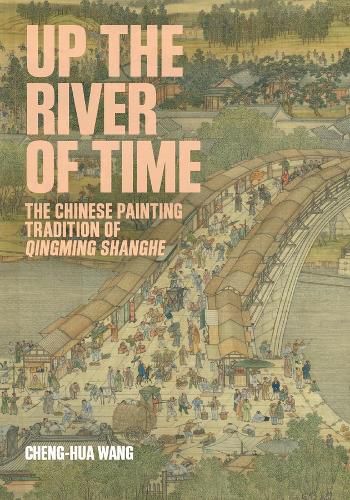Readings Newsletter
Become a Readings Member to make your shopping experience even easier.
Sign in or sign up for free!
You’re not far away from qualifying for FREE standard shipping within Australia
You’ve qualified for FREE standard shipping within Australia
The cart is loading…






Qingming shanghe (Up the River during Qingming), dubbed China's Mona Lisa, is a painting whose primordial version is attributed to Zhang Zeduan, a painter who lived during the Northern Song dynasty (960-1127). It is so revered that to this day there exist more than one hundred handscroll paintings with this title, including the original and later versions produced during the late Ming through the High Qing. Up the River of Time is the first study in any language to treat the entire cultural constellation of Qingming shanghe as a painting tradition. Cheng-hua Wang investigates how the original Northern Song version-deemed a classic in art-historical research-and its later iterations shaped the norms of painting, triggered cultural associations, fostered the genre of cityscapes, and redefined the meanings of "reproduction" and "forgery." By studying the thematic links between the painting's various versions and tracing their development over several centuries, Wang leads us to revisit China's painting history. Such a focus that pivots toward broad considerations of thematic and cultural significance prompts a reassessment of what defines artistic value. Over time, Qingming shanghe catalyzed a new artistic culture in China.
$9.00 standard shipping within Australia
FREE standard shipping within Australia for orders over $100.00
Express & International shipping calculated at checkout
Stock availability can be subject to change without notice. We recommend calling the shop or contacting our online team to check availability of low stock items. Please see our Shopping Online page for more details.
Qingming shanghe (Up the River during Qingming), dubbed China's Mona Lisa, is a painting whose primordial version is attributed to Zhang Zeduan, a painter who lived during the Northern Song dynasty (960-1127). It is so revered that to this day there exist more than one hundred handscroll paintings with this title, including the original and later versions produced during the late Ming through the High Qing. Up the River of Time is the first study in any language to treat the entire cultural constellation of Qingming shanghe as a painting tradition. Cheng-hua Wang investigates how the original Northern Song version-deemed a classic in art-historical research-and its later iterations shaped the norms of painting, triggered cultural associations, fostered the genre of cityscapes, and redefined the meanings of "reproduction" and "forgery." By studying the thematic links between the painting's various versions and tracing their development over several centuries, Wang leads us to revisit China's painting history. Such a focus that pivots toward broad considerations of thematic and cultural significance prompts a reassessment of what defines artistic value. Over time, Qingming shanghe catalyzed a new artistic culture in China.